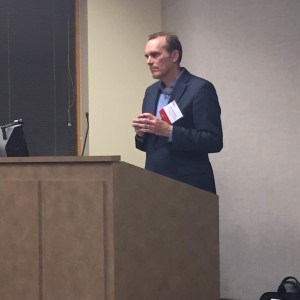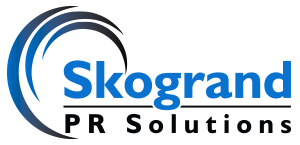
Steve Wehrenberg, Teaching Professor & Program Director at University of Minnesota School of Journalism and Mass Communication, teaches audience members how to get their stories straight.
With an entertaining presentation featuring references to “Star Wars,” “The Godfather” and other pop culture hits, Steve Wehrenberg educated an audience on brand archetypes at a Minnesota PRSA event held at the University of Minnesota. Wehrenberg is a professor and program director at the University of Minnesota with more than 35 years of professional strategic communications experience, previously holding the CEO position at Campbell Mithun.
At Campbell Mithun, Wehrenberg helped clients such as H&R Block, Andersen Windows and the United Way find their brand archetype. An archetype is a recurrent symbol or motif that often occurs in literature, but Wehrenberg stressed the importance of establishing an archetype for brands.
Creating one overarching motif for your brand can have large effects on brand performance. Wehrenberg noted developing your brand archetype can increase customer experience, brand perception, customer behavior and business performance.
Getting your story straight is important for three reasons:
- Convergence: The message portrayed through advertisements and public relations efforts needs to echo the brand itself.
- Millennials: Over 50 percent of millennials find brands on social media sites annoying. They look for brands with higher purpose and authenticity.
- Science and Economics: When people are exposed to a character-driven story, the brain releases oxytocin, which can signal “trust” in the story. This can be equally useful inside the organization as well.
There are a variety of archetypes seen in brands. When a brand has a consistent story, consumers notice. Wehrenberg listed examples of archetypes that have worked out particularly well for brands:
- “The Explore Story”: Associated with journeys, escapism and individuality.
- “The Advocate Story”: “Yes we can” — Obama campaign. Associated with transforming social concerns, inspiring the empowerment of groups or causes.
- “The Outlaw Story”: Harley-Davidson. Associated with the enticement of forbidden fruit, believes in revolution and destruction of what isn’t working.
- “The Ruler Story”: United Way. Associated with power, authority and leadership; believes in taking control to gain and maintain power.
Wehrenberg broke archetypes down further by applying Margaret Mark’s “The Hero and the Outlaw” criteria to “Star Wars” characters as well as listing their archetypes. He showed Luke Skywalker as the hero wishing to see change, Han Solo as the outlaw exuding independence, C-3PO as the jester wishing for belonging and Princess Leia as the caregiver providing stability.
It’s important to understand that oftentimes the brand with the best performance may not be labeled as the best in the marketplace; it’s the brand consumers believe is the best. Stakeholders’ perceptions are important and can encourage you to alter your story to make it stronger.
